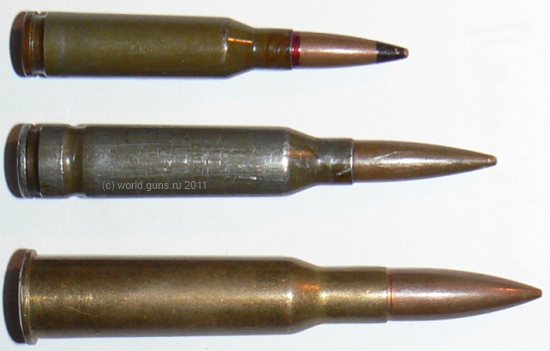The Kalashnikovs that have out gunned and out ranged the western 5.56mm rifles and LMGs were actually PKMs, which are general purpose machineguns in 7.62 x 54r calibre.
Actually in almost all those long range engagements (in particular in mountainous, near hill and desert environments) and representing, from a document of US Army itself about 61 % of small calibre fire engagements in Afghanistan and 57% in Iraq theatre) the small calibre fire was always a mix of LMGs and AK-47 fire that ,thanks to the far greater aerodynamic coefficient and muzzle energy of 7,62mm rounds, posed ISAF units in enormous disadvantage.
This is proved by a great amount of battlefield events ; for example the "Screaming Eagles" - US Army 101st Airborne ,an "elite" division and one of the better trained and equipped of the whole US Army - after having witnessed ,in the opening stage of a series of operations in the Afghanistan's mountains, the total uselessness of theirs M-16's 5,56 mm rounds in fighting "insurgents" capable to effectively engage them at over the doubloe of the effective range of theirs standard main weapon, waiting that in the theatre would came the modified M-14s that them had urgently requested , was forced to employ in the meantime samples of the same AK-47 that was used against them captured in pasted operations !
From An Army Outgunned : Physics Demands A New Basic Combat Weapon by Dr. Joseph P. Avery
"The Army itself demonstrated proof of the M16’s obsolescence when the 101st Airborne and other units started using significantly enhanced 7.62 mm M14s in Afghanistan in mountain battles where the M16A4 and M249 proved basically useless.
In the interim, the soldiers themselves used captured AK-47s to better compete in the mountainous terrain.
As the title of this article emphasizes, we are clearly outgunned, and that situation will continue as we fight a geo-diverse global war on terrorism and face advanced new weapons, such as the AK-12, the 5th-generation Russian AK."
A hit at 600m is unlikely by either rifle so the conclusions are irrelevant. More importantly the lethality of both rounds at such ranges mean a hit would be largely meaningless anyway.
The lethality of the two calibres at similar distances (and surprisingly also at much lower range) is a whole world apart.
Just to provide you a measure at equal overall conditions, a 7,62 mm round at 600 m deliver on target the same energy of a 5,56 mm round at...190 m !!
Not only, but 5,56 mm rounds lose at a far greater rate speed for over-median range and are also much more susceptible to the cross-wind solicitations ,humidity channelling and axis stability ; all of that contribute to exacerbate even more the already strongly limited capability to engage enemy warfighters at the grow of the range over the 220-230 meter's threshold .
From "Biting the Bullet" pag 11 :
"Compared to 7.62 mm ammunition, 5.56 mm bullets have less than half the mass (4.0 g versus 9.33 g), and only half the energy at the muzzle (1,730 J versus 3,352 J)13. The 5.56 mm bullet is also less aerodynamic, which means it loses its initial velocity and energy more quickly.
The laws of physics mean that 5.56 mm ammunition by definition has a shorter overall range, a reduced ability to retain energy at longer ranges and makes a smaller wound channel when it hits a target."
Within 300m the 5.45mm round is effective... ask Vlad... he seems to be happy with it.
We should ask to him if you would desire to engage at this distance...or over...an enemy with similar level of training ,coordination , ballistic vests, but armed with rifles capable at this range to perforate a typical house party wall retaining ,after, the same lethal energy of its 5,45 round at 190 m unhindered !! A round that, at this range and over, is almost four times less influenced by tangential cross-wind !! A round that would retain enough stopping power to totally incapacitate him also with a secondary arms wound...etc....etc...
I repeat one more time ,is important that any operative is confident on the equipment it employ on the battlefield but that don't cancel problems linked to physics ballistic fundamentals.
Permanent tissue wounds incompatible with live and capable to generate substantial attrition on effectives of a powerful enemy Army in a protracted war -the real aim that should always guide the design of the main weapon for any branch of Armed Forces - is the product of round's radial fragmentation.
The supposed expanded wounding caused by the yaw-induced tumbling effect ,moreover directly linked to speed of intrusion at its own time dramatically decreasing at ranges greater than 250 m for 5,56 mm and 5,45 mm ammunitions has been demonstrated experimentally and on the battlefield to happen in the minority of the instances and with effects very very far from those "sold" previously theirs introduction,.
Ballistic interactions is equal in South Africa ,Russia, Chile or Alaska ,in facts overall Russian 5,45 mm show obviously the same problems of NATO 5,56 mm rounds :
http://ammo.ar15.com/project/Fackler_Articles/ak74_wounding_potential.pdf
Aimed special mission in Daghestan or police operations against separatists can only screen the total unsuitability of 5,45 mm rounds as central ammunition for Russian Army Infantry's main weapon for fight a strong enemy in an high intensity large scale War ,but those days the long series of latest low intensity local conflicts seem to have literally sedated the analytical and critical thinking of majority of military planners worldwide.
The result ,usually is a very abrupt awakening coming from the battlefield (like for 5,56 round's performances and average range of engagement so far from what planned or...hoped).




 flamming_python
flamming_python
